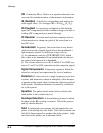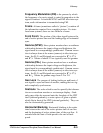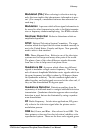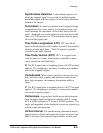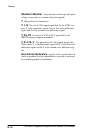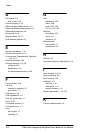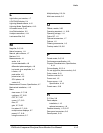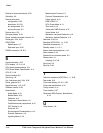
Glossary
1760 Series Component Waveform/Vector Monitor User Manual
G-9
Synchronous Detection A demodulation process in
which the original signal is recovered by multiplying the
modulated signal with the output of a synchronous oscillator
locked to the carrier.
Termination In order to accurately send a signal through
a transmission line, there must be an impedance at the end
which matches the impedance of the source and of the line
itself. Amplitude errors and reflections will otherwise result.
Video is a 75 Ω system, so a 75 Ω terminator must be put at
the end of the signal path.
Time Code, Longitudinal (LTC) LTC is an 80-bit
signal with information which makes it possible to accurately
identify an individual frame. The LTC signal is typically
recorded on an audio channel.
Time Code, Vertical (VITC) VITC is a signal in the
vertical interval of video, which makes i t possible to accu-
rately identify an individual field.
U The B--Y signal after a wei ghting factor of 0.493 has been
applied. The weighting is nece ssary to reduce peak modula-
tion in the composite signal.
Unmodulated When used to describe television test sig-
nals, this term refers to pulses and pedestals which do not
have high-frequency chrominance information added to
them.
V The R--Y signal after a weighting factor of 0.877 has been
applied. The weighting is nece ssary to reduce peak modula-
tion in the composite signal.
Vectorscope A specialized oscilloscope which demodu-
lates the video signal and presents a display of R --Y versus
B--Y in NTSC systems (or V versus U in PAL systems). The
angle and magnitude of the displayed vectors are respectively
related to hue and saturation.
Vertical Interval The synchronizing information which
appears between fields and signals the picture monitor to go
back to the top of the screen to begin another vertical scan.






